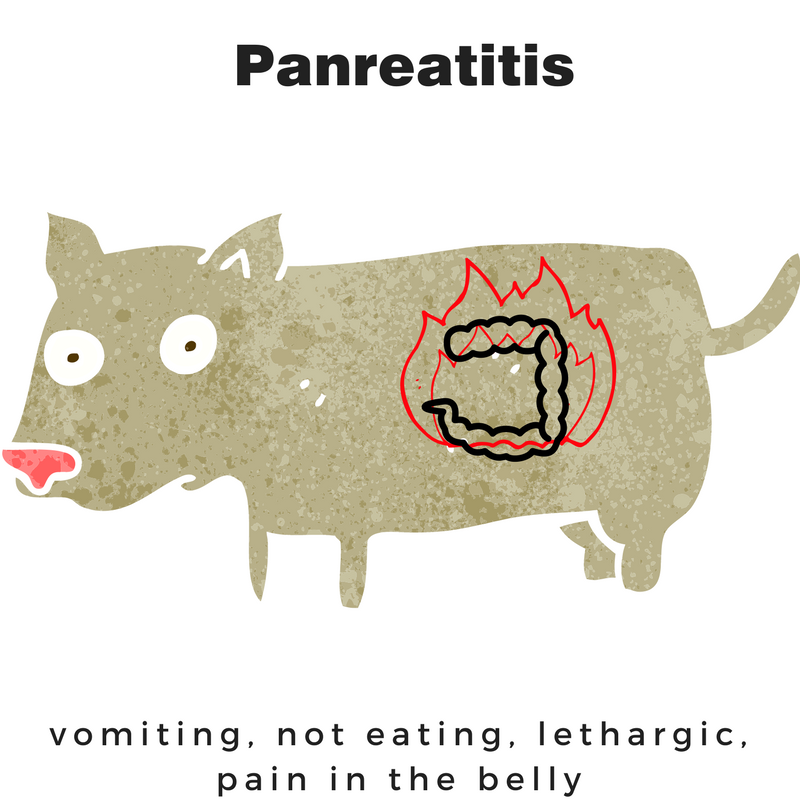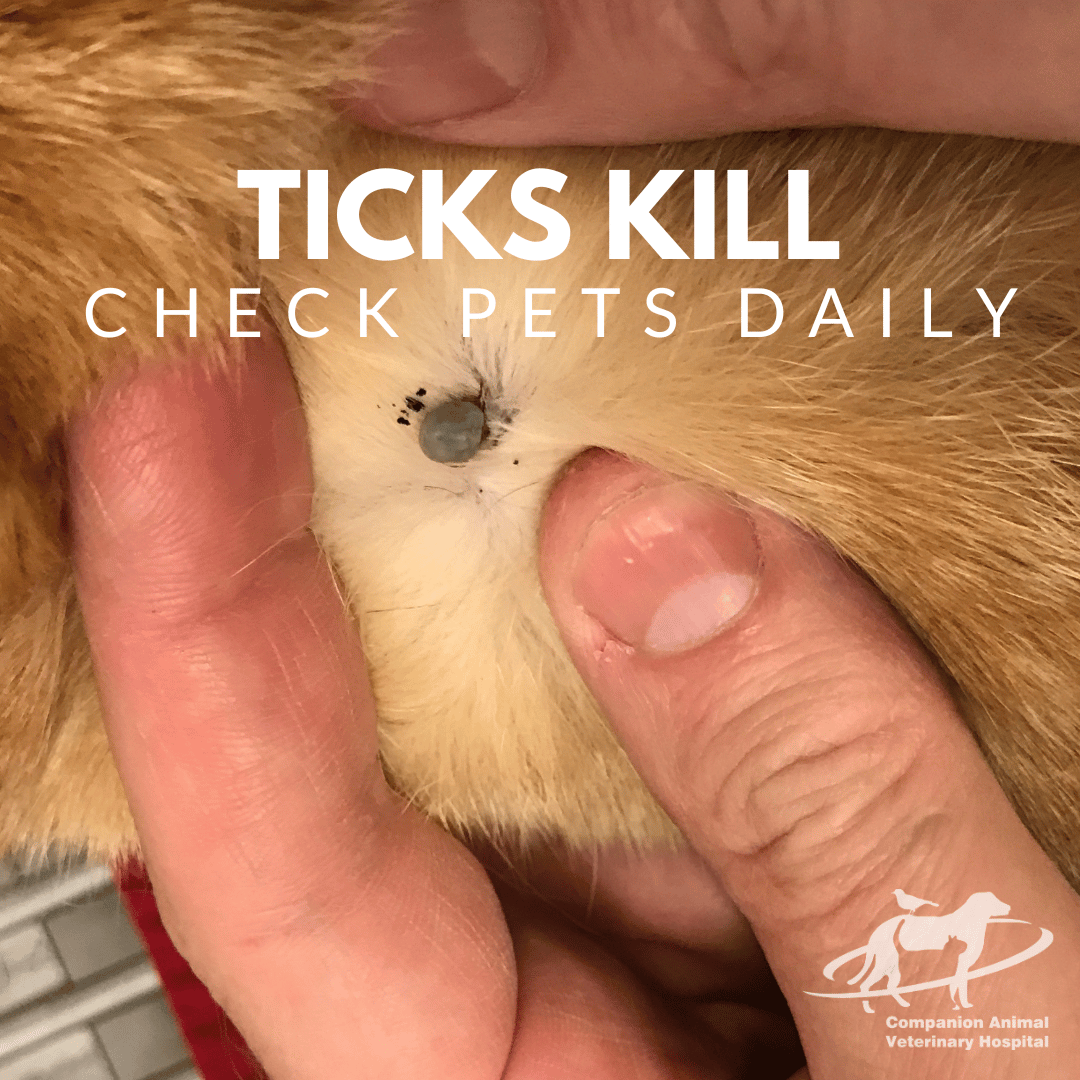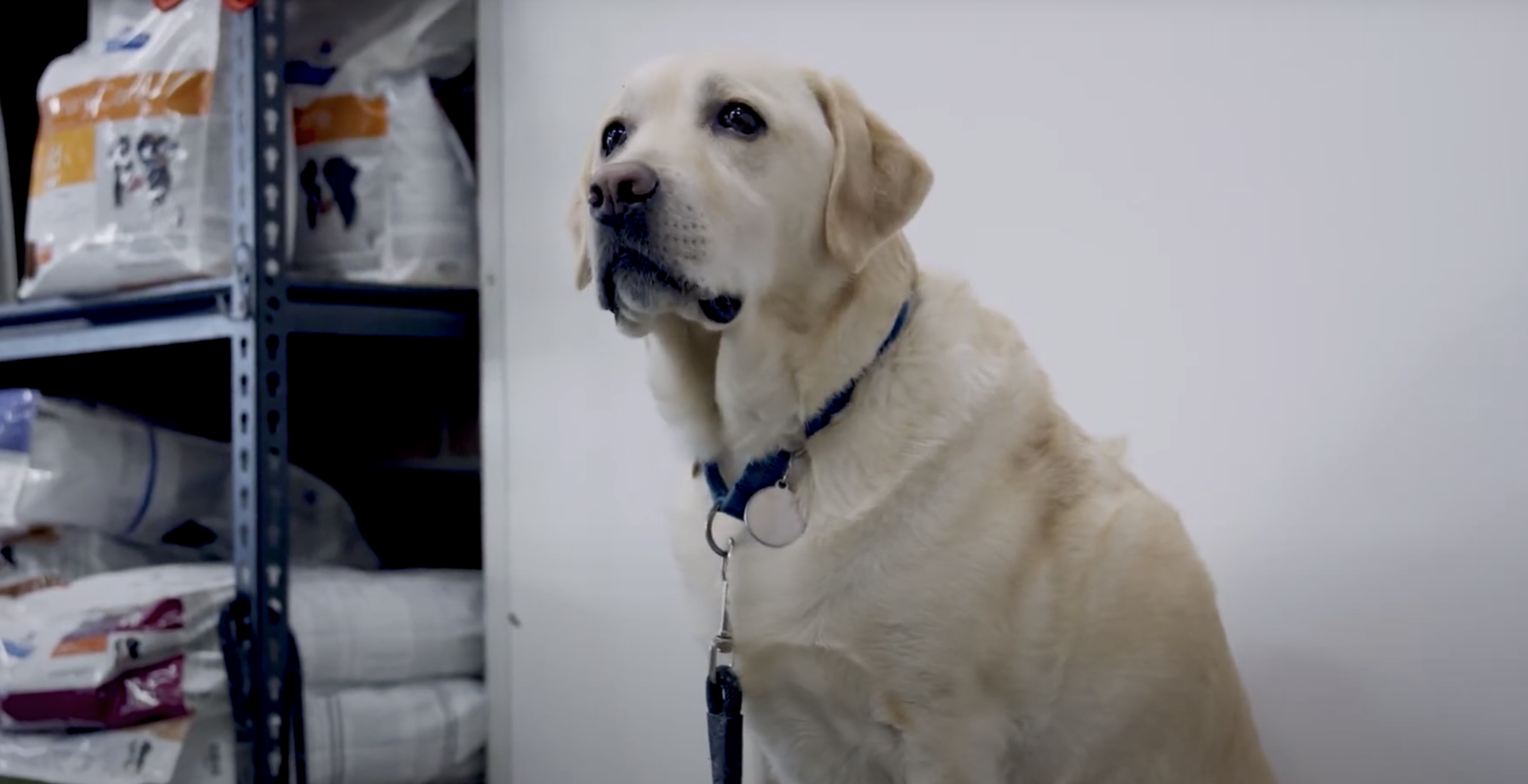What’s the pancreas?
The pancreas is an internal organ that lies near the stomach and has a number of functions to do with food digestions and metabolism. When food arrives in the stomach the acid there starts to break it down into small pieces. Once small enough it moves into the small intestine where the pancreas releases digestive enzymes to further process the food into useful components.
What’s pancreatitis?
Pancreatitis (‘itis’ = inflammation of) results when the pancreatic enzymes leak out of the pancreatic ducts and into surrounding tissue, essentially digesting nearby organs instead. Depending on the degree of leakage, symptoms can range from mild discomfort to severe vomiting, fever and abdominal pain and death in extreme cases.
Pancreatitis is most often seen after a dog eats a fatty meal, so is common after holidays when BBQs, lamb roasts, ham or fatty bones are stolen or fed as left overs. Even dogs who are regularly fed similar scraps can develop signs. This may be because they have a chronic, lingering form of the disease that tips over to a more obvious case. Pancreatitis has also been associated with obesity, some drugs, some breeds, trauma and hormonal diseases among others things.
Diagnosis of pancreatitis is by a combination of history, physical signs, blood tests, X-rays or ultrasound.
Treatment
There is no specific treatment for pancreatitis so care is supportive, with IV fluids, pain relief, anti-nausea medication and antibiotics if indicated. Most dogs will spend a few days in hospital. Single acute episodes can recover completely however other dogs are left with permanent damage causing chronic pancreatitis and some dogs develop other serious side effects like pancreatic abscess, diabetes, generalised inflammation or bleeding disorders which can be life threatening. Dogs that have had an episode often end up on lifetime low fat diets.






